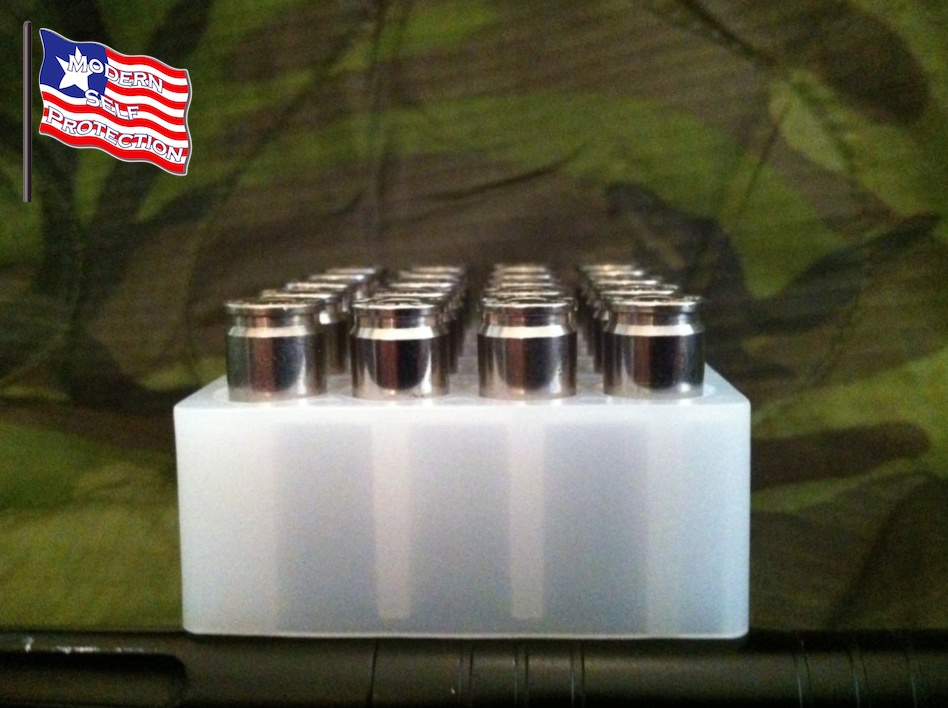Podcast: Play in new window | Download
Subscribe: Google Podcasts | RSS
You change your carry ammo on a schedule… right?

Here are two ways to set it up; Time-based or usage-based.
Time
If you carry every day you should change out your carry ammo every two years max. If you aren’t carrying that gun every day and it lives in the safe more than on you, five years is the max.
Ammo doesn’t really go “bad” in that time frame but, it does start to show wear and can have some corrosion on the casings. Ammo is exceptionally precise in length, width, depth, circumference, and weight. Any change in any of these measurements can make the bullet go off its intended line or cause a malfunction in your firearm.
Ammo is cheap, life is expensive.
Usage
Ammo gets worn out by going in and out of the chamber or by getting handled.
Rifles with a floating firing pin, like your AR-style rifle, ammo should only go into the chamber once and then go into the training bin.
How to tell if it has a floating firing pin and why. When you chamber a round with a floating firing pin the firing pin crashes forward as the bolt closes and actually bounces off the primer. There is not enough energy to set off the round, but it will leave a dent. If you continue to chamber that same round, eventually you will have a problem.
In your rifle you should probably only chamber a round once, and then let that one go to your training bin. I wouldn’t depend my life on it.
Handguns
I dry fire almost every day. I dry fire my carry gun. My carry gun is my everything gun. I shoot competitions with it, I carry it, and I train with it. I’m not the gun-of-the-month person. I’m a one-gun person. I probably should have a second carry gun exactly like my primary so that I can rotate them out.
Every time a round comes out of my gun I mark it with a sharpie. First, one line across it. The second time, I add a line at a 90-degree angle so it looks like a cross. The third time a round comes out I blackout the entire back of the round. And that is the last time it will go in and out of the chamber. I rotate that round to the bottom of the magazine and when it comes up again, it’s time for new ammo.
How Rounds Wear
Ammo wears in a couple of critical ways, the rim gets torn off or rounded, the bullet is set back, the crimp weakens or fails, the jacket or finish wears and corrodes, and the primers break. Anyone of these could be a critical failure that could cost you your life with carry ammo.
The rim getting torn off or rounded is less and less of a problem because more than one police officer has lost their life because of this. Every time you chamber a round the extractor grabs the rim. When you pull that round out of the chamber the extractor is the little claw that holds onto it. Since the extractor is made of hardened steel and the case or the round is brass, the case rim wears. Eventually, the rim will be rounded off or break off and the extractor will have nothing to pull the case out of the chamber with. You will have a one-shot gun.
Bullet setback creates overpressure inside the chamber. When you chamber a round, the correct way, you let the slide slam forward and strip the round off the top of the magazine. The round accelerates forward and the only thing holding the bullet is the crimp. If you have a cheaper crimp, or there is something wrong with the crimp, the bullet will go inside the casing a little further. With less volume in the case you will get more pressure and an overpressure round is not going to send the bullet true and could cause the case to rupture or get stuck in the chamber.
Every time the round is chambered that crimp has to hold the bullet in place. It will only do its job for so long. The crimp will fail at a certain time. It has to so that the bullet can leave the casing and do its job. If the crimp fails completely the bullet will come off and the powder will get stuck everywhere in the gun. I have seen the crimp on the primer fail on an AR rifle and had the primer lock up the trigger and the gun would not fire.
The case is made of brass, steel, or aluminum (now in some cases plastic). Sooner or later it will corrode. The corrosion could cause all sorts of problems inside the chamber. Don’t bet your life that it will work correctly.
Lastly, if the crimp on the primer doesn’t cause your problem, the primer could go bad from being beaten on for a long period of time. The primer could go inert and just not fire, or could fall off like above, or could just slip out a hair so that there is not enough energy from the striker or hammer to break the primer and set it off.
Stay Safe,
Ben
P.S. I’m riding to raise money to fight Alzheimer’s and would love if you could throw a couple bucks at it. Click here to help me and the Alzheimer’s Association out.
2 Replies to “When to Change out Carry Ammo”